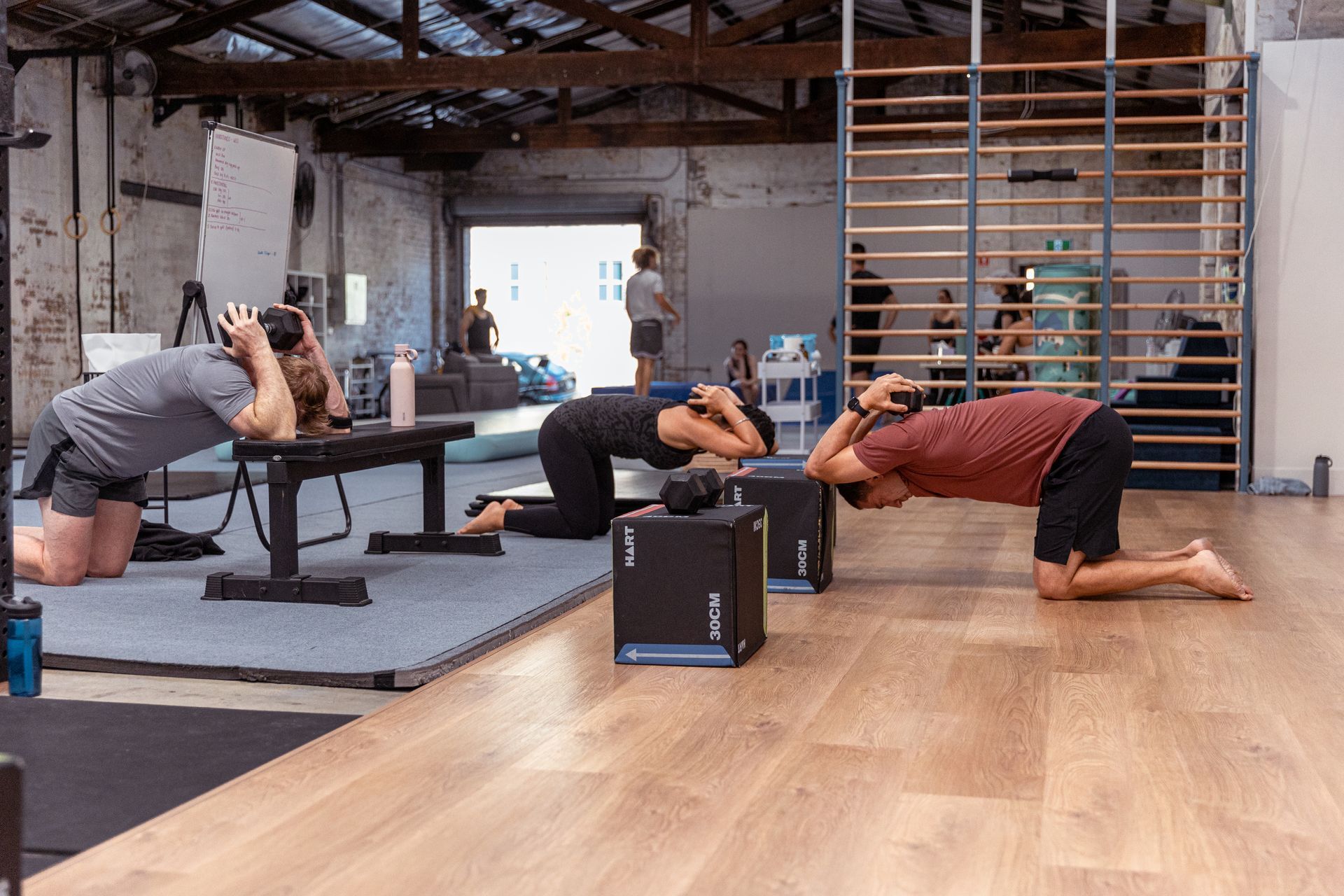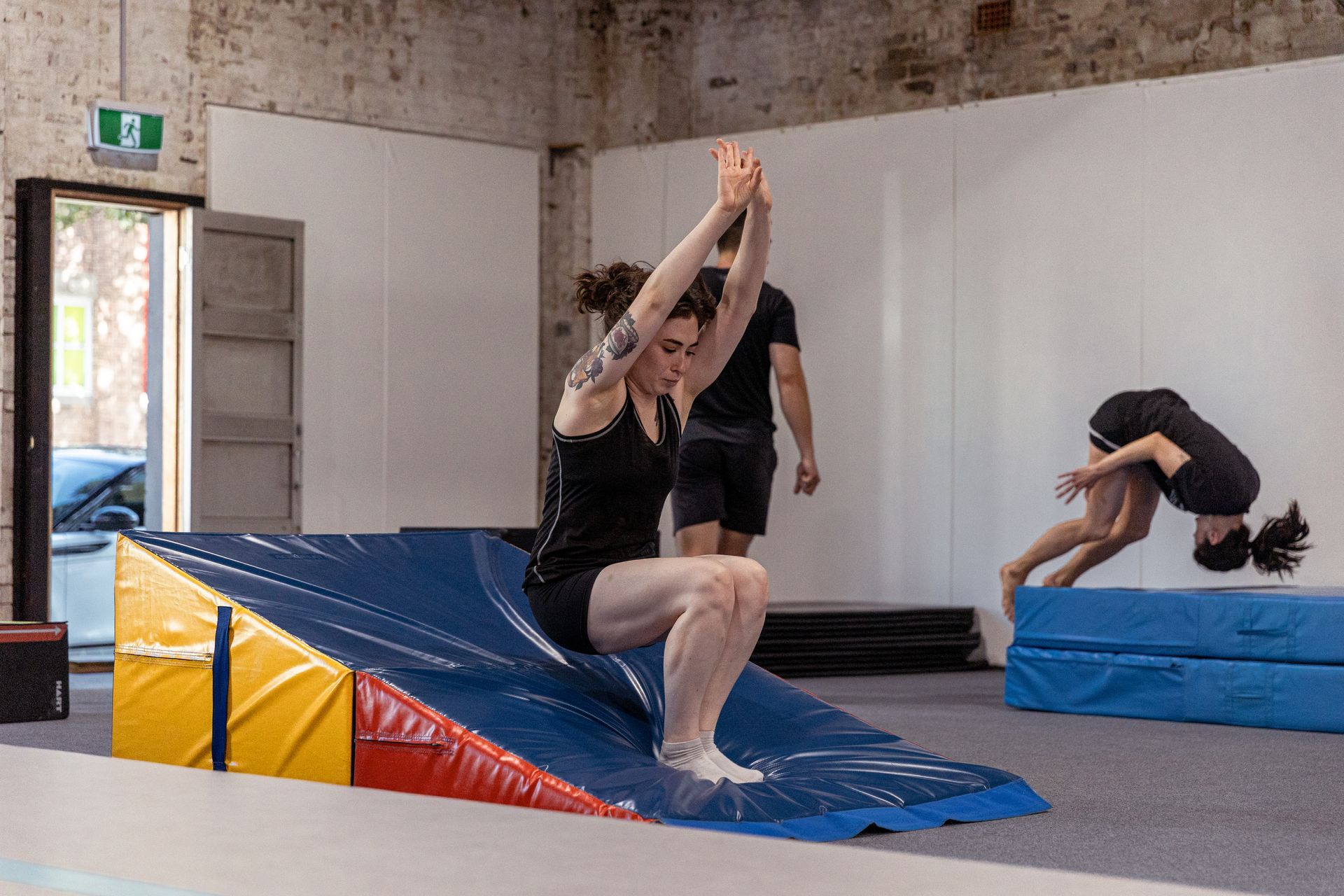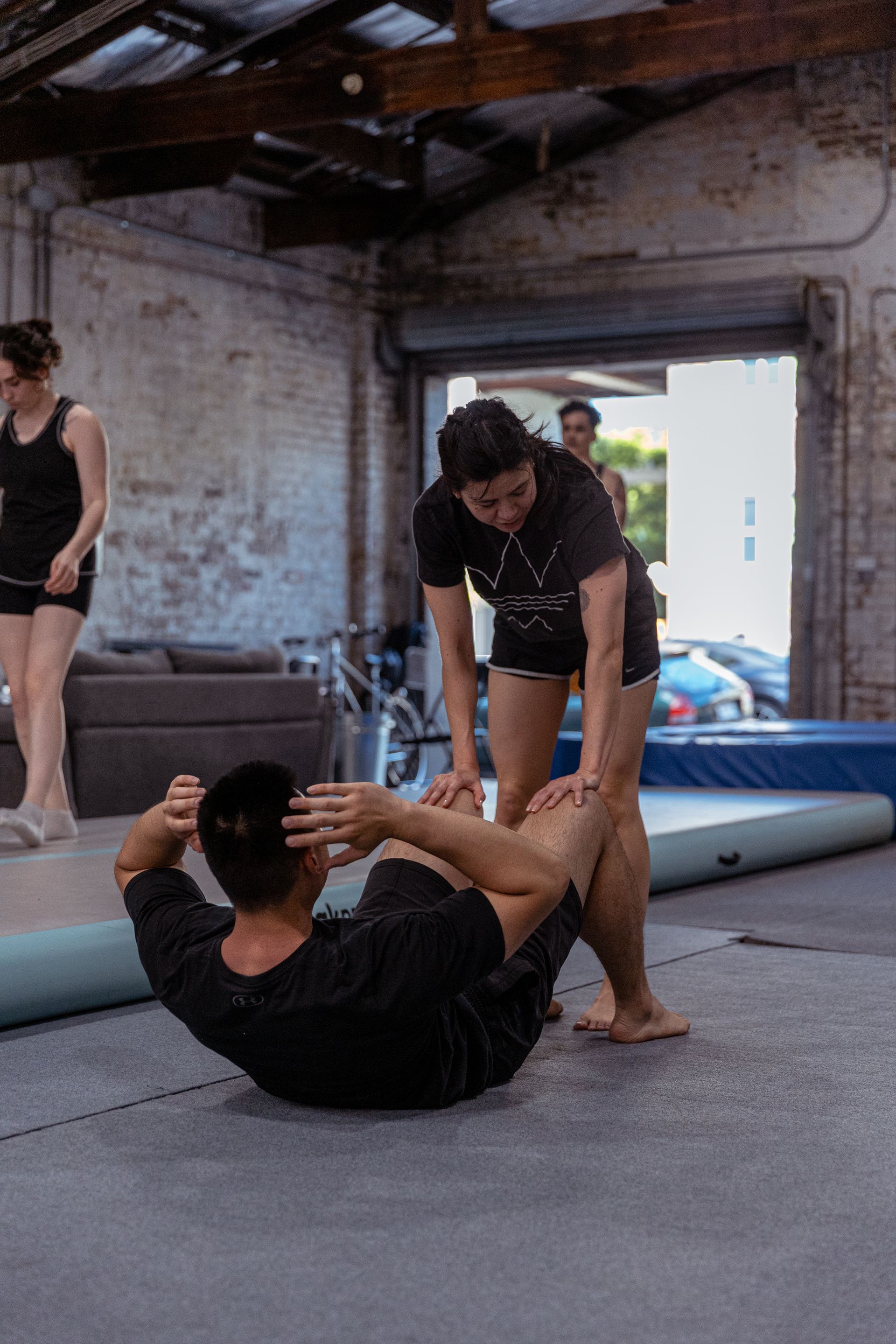The Ultimate Guide to Flexibility Training: How to Improve Your Gymnastics Skills
Flexibility training is an essential aspect of adult gymnastics and calisthenics training. It helps to improve range of motion, muscle flexibility and elasticity, performance, balance, posture, and reduce the risk of injury. In this guide, we will provide you with a comprehensive overview of flexibility training and its benefits, along with the techniques and exercises you can incorporate into your training routine.

The Benefits of Flexibility Training
Flexibility training offers several benefits, including:
Improved range of motion: Flexibility training helps to increase the range of motion of joints, allowing you to perform a wider range of movements.
- Increased muscle flexibility and elasticity: It improves muscle flexibility and elasticity, allowing them to stretch further and contract more efficiently.
- Enhanced performance and reduced risk of injury: Flexibility training can help to reduce the risk of injury and improve performance by preparing muscles and joints for the demands of your sport.
- Improved posture and balance: Improved flexibility can help to correct imbalances in your body, resulting in better posture and balance.
- Reduced stress and tension: Flexibility training can help to reduce stress and tension in your body, promoting relaxation and improved mental health.
Understanding Flexibility
Before you start with flexibility training, it's essential to understand what it is and the factors that affect it.
- Definition of flexibility: Flexibility refers to the ability of a joint or a group of muscles to move through a range of motion without pain or discomfort.
- Types of flexibility: There are two types of flexibility: static flexibility and dynamic flexibility. Static flexibility is the ability to hold a stretch in a fixed position, while dynamic flexibility is the ability to move a joint through its full range of motion.
- Factors affecting flexibility: Age, gender, genetics, previous injuries, and physical activity level are some factors that affect flexibility.
- Importance of warming up before stretching: It's essential to warm up before stretching to avoid injury and improve the effectiveness of the stretch.
Flexibility Training Techniques
There are four main flexibility training techniques:
- Static stretching: This involves holding a stretch in a fixed position for an extended period.
- Dynamic stretching: This involves moving a joint through its full range of motion in a controlled manner.
- PNF stretching: This involves stretching and contracting a muscle to improve its flexibility.
- Active isolated stretching: This involves stretching a muscle for a short period, then releasing and repeating the stretch.
Flexibility Training Exercises
There are several exercises that can improve flexibility, including:
- Neck stretches: These stretches help to relieve tension in the neck and improve range of motion.
- Shoulder stretches: These stretches help to improve shoulder mobility and prevent shoulder injuries.
- Back stretches: These stretches help to improve spinal mobility and reduce lower back pain.
- Hip stretches: These stretches help to improve hip mobility and prevent hip injuries.
- Leg stretches: These stretches help to improve leg flexibility and reduce the risk of leg injuries.
- Foot and ankle stretches: These stretches help to improve foot and ankle mobility and reduce the risk of foot and ankle injuries.

Benefits of Flexibility Training for Adult Gymnastics and Calisthenics Training
Flexibility training is a crucial component of adult gymnastics and calisthenics training. It plays a vital role in improving performance, reducing the risk of injury, and enhancing overall physical and mental health.
Improved Gymnastics and Calisthenics Skills
Flexibility training can help you achieve a greater range of motion, which is essential in performing gymnastics and calisthenics skills. By improving your flexibility, you can achieve better posture, balance, and body control. It can also help you execute challenging moves such as handstands, front and middle splits, and stalder presses.
Reduced Risk of Injury
Incorporating flexibility training into your workout routine can also reduce the risk of injury. Improved flexibility can help prevent muscle strains and tears, joint pain, and other injuries related to stiffness and inflexibility. By increasing the range of motion in your joints and muscles, you are also preparing them for the demands of gymnastics and calisthenics training.
Enhanced Physical and Mental Health
Flexibility training can also have numerous physical and mental health benefits. It can improve blood flow and circulation, reduce stress, and enhance overall relaxation. It can also boost your mood and energy levels, which can help you maintain focus and motivation during training.
Introduction to Active Flexibility
Active flexibility refers to the ability to move your body through a range of motion using your own strength, without relying on external forces such as gravity or a partner's assistance. It is an essential component of gymnastics and calisthenics training and can help improve overall performance.
Types of Flexibility Training
There are different types of flexibility training that you can incorporate into your workout routine, each with its own benefits and limitations.
Static Stretching
Static stretching involves holding a stretch for a prolonged period, usually between 15-30 seconds. It is a common form of flexibility training and can help improve range of motion, reduce muscle tension, and enhance overall relaxation.
Dynamic Stretching
Dynamic stretching involves moving your body through a range of motion in a controlled manner. It is typically used as a warm-up before a workout and can help improve flexibility and range of motion while also preparing your muscles for the demands of training.
PNF Stretching
PNF (proprioceptive neuromuscular facilitation) stretching is a form of flexibility training that involves alternating between contracting and relaxing specific muscles. It is often done with a partner and can help improve flexibility and range of motion while also increasing strength and control.
Active Isolated Stretching
Active isolated stretching involves holding a stretch for 1-2 seconds and then releasing it, followed by another stretch in the same muscle group. It is a form of active flexibility training that can help improve overall range of motion, strength, and control.
Flexibility training is a critical component of adult gymnastics and calisthenics training. It can help improve overall performance, reduce the risk of injury, and enhance physical and mental health. By incorporating different types of flexibility training into your workout routine, you can improve your flexibility and achieve your gymnastics and calisthenics goals.

Best Flexibility Exercises for Adult Gymnastics and Calisthenics Training
Flexibility is essential in both gymnastics and calisthenics training. It enables you to perform more advanced movements, decreases the risk of injury, and helps you to recover quickly. In this section, we will discuss some of the best flexibility exercises that you can do to improve your gymnastics and calisthenics skills.
Split stretches
Split stretches are great for increasing the flexibility in your hamstrings, hip flexors, and inner thighs. To perform a split stretch, start in a lunge position with your back leg extended behind you. Slowly lower your back knee to the ground and slide your front leg forward until you feel a stretch in your groin and hamstrings. Hold this position for 30 seconds before switching sides.
Pike stretch
The pike stretch is an excellent exercise for increasing flexibility in your hamstrings, lower back, and hips. Start by sitting on the ground with your legs extended in front of you. Reach forward with your hands and try to touch your toes. If you can't reach your toes, use a yoga strap or towel to gently pull yourself forward. Hold this position for 30 seconds.
Butterfly stretch
The butterfly stretch is great for opening up your hips and improving your flexibility in your groin area. Start by sitting on the ground with the soles of your feet touching. Gently push down on your knees with your hands until you feel a stretch in your hips and groin. Hold this position for 30 seconds.
Shoulder bridge
The shoulder bridge is a great exercise for improving the flexibility in your lower back, glutes, and hamstrings. Start by lying on your back with your knees bent and your feet flat on the ground. Push through your heels and lift your hips up towards the ceiling. Hold this position for 30 seconds.
Cobra stretch
The cobra stretch is excellent for improving the flexibility in your spine and strengthening your lower back muscles. Start by lying on your stomach with your hands under your shoulders. Slowly lift your chest up off the ground while keeping your hips and legs on the ground. Hold this position for 30 seconds.
Figure four stretch
The figure four stretch is great for increasing the flexibility in your hips and glutes. Start by lying on your back with your knees bent and your feet flat on the ground. Cross your right ankle over your left knee and gently pull your left leg towards your chest. Hold this position for 30 seconds before switching sides.
Tips:
Don't force your body into positions that cause pain
Take deep breaths while holding each stretch to help relax your muscles
Gradually increase the duration and intensity of your stretches over time
In the next section, we will discuss how to create a flexibility training program for adult gymnastics and calisthenics training.
Creating a Flexibility Training Program for Adult Gymnastics and Calisthenics Training
Flexibility training is an essential part of any gymnastics or calisthenics training program. But how do you create a flexibility training program that is effective and efficient? In this section, we will discuss the steps you can take to create a successful flexibility training program for adult gymnastics and calisthenics training.
Determine Your Goals and Objectives
The first step in creating a flexibility training program is to determine your goals and objectives. What do you want to achieve through your flexibility training? Do you want to improve your range of motion? Do you want to prevent injury? Do you want to improve your overall performance? Once you have identified your goals, you can tailor your flexibility training program to meet your specific needs.
Plan Your Training Schedule
Once you have identified your goals and objectives, you need to plan your training schedule. How often will you perform flexibility exercises? How long will each session be? Will you perform flexibility exercises before or after your gymnastics or calisthenics training? It's important to create a schedule that is realistic and sustainable.
Choose Your Exercises
The next step is to choose the exercises that you will include in your flexibility training program. As discussed in the previous section, there are a variety of flexibility exercises that can be effective for adult gymnastics and calisthenics training. Choose exercises that target the specific muscle groups and movements that are important for your training goals.
Incorporate Periodization
Periodization is the process of varying your training over time to achieve specific goals. When it comes to flexibility training, periodization can be used to gradually increase your range of motion over time. You can incorporate periodization by gradually increasing the intensity and duration of your flexibility exercises over several weeks or months.
Warm Up Before Flexibility Training
It's important to warm up properly before beginning your flexibility training program. A proper warm-up can help to prevent injury and prepare your muscles for the exercises ahead. A good warm-up should include dynamic stretching exercises and light cardiovascular exercise.
Cool Down After Flexibility Training
Just as it's important to warm up before your flexibility training, it's also important to cool down properly afterwards. A proper cool down can help to reduce muscle soreness and prevent injury. A good cool down should include static stretching exercises and light cardiovascular exercise.
Incorporate Rest and Recovery
Rest and recovery are essential components of any training program. When it comes to flexibility training, rest and recovery can help to prevent injury and promote muscle growth. Be sure to incorporate rest days into your training schedule, and take the time to stretch and foam roll your muscles after each training session.
Incorporating flexibility training into your overall gymnastics or calisthenics training program can help to improve your performance and prevent injury. By following these steps, you can create a flexibility training program that is tailored to your specific needs and goals.
Tips for Maximizing Flexibility Training
Flexibility training is an essential component of adult gymnastics and calisthenics training. While following a well-designed flexibility training program can lead to significant improvements in your flexibility and performance, there are additional strategies that can help you maximize your results. In this section, we will discuss some tips for getting the most out of your flexibility training.
Focus on Proper Form
Proper form is critical when performing flexibility exercises. Incorrect form can lead to injuries and limit the effectiveness of the exercise. Make sure to pay attention to the details of each exercise, such as the position of your body and the alignment of your joints. If you're not sure about proper form, consider working with a qualified trainer or coach who can provide guidance.
Breathe Properly
Breathing properly during flexibility training can help improve your range of motion and reduce tension in your muscles. Focus on taking deep, slow breaths and exhaling fully as you stretch. This will help you relax and deepen your stretch.
Stay Focused
Mental focus is crucial when performing flexibility exercises. To get the most out of your training, try to avoid distractions and stay focused on the present moment. Focus on the sensations in your body and the stretch you are performing.
Use Foam Rolling
Foam rolling is a form of self-massage that can help release tension in your muscles and improve your flexibility. It's an excellent way to warm up before stretching or to help recover after a workout. Use a foam roller to massage your muscles, focusing on any areas that feel tight or sore.
Incorporate Other Recovery Techniques
In addition to foam rolling, there are many other recovery techniques that can help improve your flexibility and reduce the risk of injury. Some examples include massage, ice baths, and compression garments. Experiment with different techniques to find what works best for you.
Flexibility training is an essential component of adult gymnastics and calisthenics training. To get the most out of your training, make sure to focus on proper form, breathing techniques, and mental focus. Consider incorporating foam rolling and other recovery techniques to help maximize your results. With consistent effort and dedication, you can improve your flexibility and take your gymnastics and calisthenics skills to the next level.

Conclusion
Flexibility training is an essential component of adult gymnastics and calisthenics training. Incorporating regular flexibility exercises into your training routine can help improve your performance, prevent injuries, and enhance overall physical and mental health.
To maximize the benefits of flexibility training, it is important to focus on proper form, breathing techniques, and mental focus. Foam rolling and other recovery techniques can also be helpful in reducing muscle soreness and improving flexibility.
We recommend creating a flexibility training program that incorporates a variety of stretching techniques, including static stretching, dynamic stretching, PNF stretching, and active isolated stretching. Incorporating periodization into your training program can also help ensure that you are progressing in a safe and effective manner.
Finally, we encourage you to consider adult gymnastics and calisthenics training programs that incorporate flexibility training. These programs can provide a structured and supportive environment for improving your flexibility and overall performance.
Remember, with dedication and consistency, you can achieve significant improvements in your flexibility and gymnastics skills. Keep pushing yourself, and enjoy the journey towards becoming a stronger and more flexible athlete.
